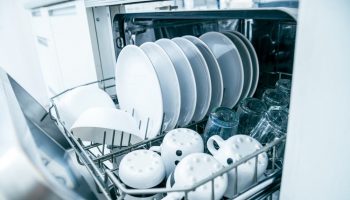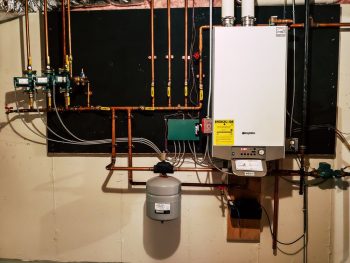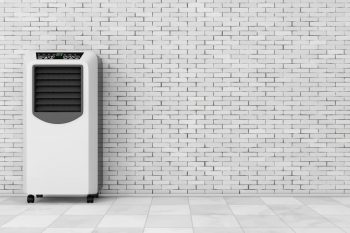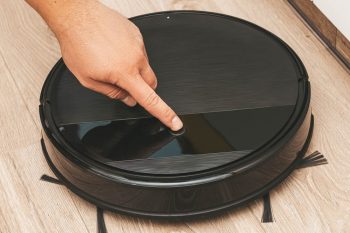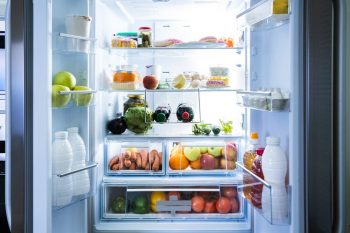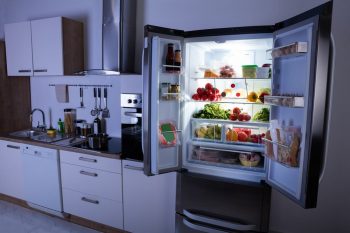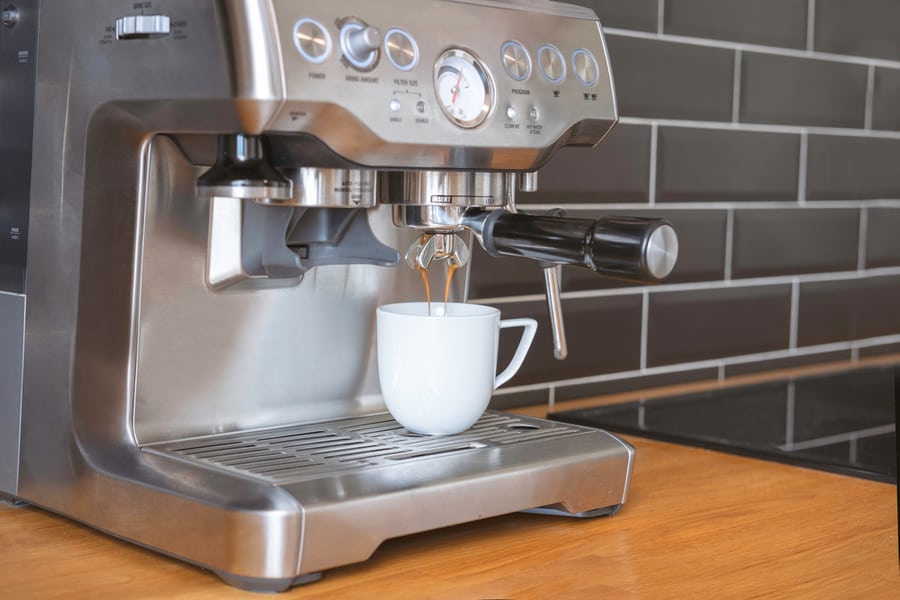
Investing in an espresso machine is one of the best decisions you can make if you are a coffee lover.
It will allow you to make your favorite cup of latte or cappuccino in the comfort of your home, save you some coins and help you improve your barista skills. So when deciding on the brand, SowTech should be high on your list.
This highly-rated machine can brew up to four cups. While the appliance has a warranty, you must know how to clean it to last longer and ensure you always get quality refreshments.
- A SowTech Espresso machine is one of the best machines you can invest in as a coffee lover. However, for it to last long, you must regularly clean and descale it.
- It is best to clean the detachable parts of the machine daily if you use it every day. However, it is also vital to give the machine’s inner parts a deep clean once a month and descale it once every three or six months if you don’t use it regularly.
- Cleaning an Espresso machine involves removing the accumulated coffee oils and coffee residues. On the other hand, descaling means removing accumulated mineral deposits from the inner parts of a coffee machine.
- You can use vinegar or lime juice/diluted citric acid to clean your SowTech Espresso machine. However, it is best to use commercial descaling products when descaling it.
This article covers the steps for cleaning a SowTech Espresso machine. We’ll also discuss how to descale a SowTech Espresso maker and answer some common questions about cleaning Espresso machines.
How To Clean a SowTech Espresso Machine

If you use your espresso machine daily, it is vital that you clean the detachable parts daily and deep clean the entire machine at least once a month.
This is because failure to clean it might result in a bitter taste of the coffee due to the accumulation of coffee oils in the basket. Also, mold and germs might begin formation in the reservoir, affecting the smell and taste of your beverage.
Mold and germs are also health risks for you and your family. Additionally, coffee residue can cause clogging and blockages, affecting the coffee maker’s efficiency.
Let’s look at the steps you can follow in cleaning your coffee machine to continue enjoying safe, fragrant, and delicious coffee.
- Use hot water, dishwashing liquid, and a clean sponge to wash the detachable parts of the coffee maker to remove the residue of coffee and coffee oils that could affect the quality of your tea the next day.
- The detachable parts include the brewing basket, drip tray, and carafe. You can clean these in a dishwasher or a sink; however, it’s essential that you carefully read the manufacturer’s instructions.
- Use white vinegar to clean your espresso machine when doing a deep clean.
- Fill the water reservoir with white vinegar as if you’re about to make 4 cups of coffee, and then close and fasten the reservoir’s lid. Ensure that there are no pods in the machine. You can also use citric acid instead of vinegar.
- Attach an empty coffee filter basket and holder so that the vinegar can work on all the parts of the espresso maker.
- Place the carafe onto the drip plate, so the vinegar collects in it after running the cycle.
- Plug the espresso maker into a socket and start brewing just as you would if you were making coffee.
- The hot vinegar will flow through the coffee basket in a few minutes and collect into the carafe. You’ll notice that the vinegar will be dark brown depending on how often you clean the coffee maker.
- You must run the vinegar through the steam assembly as well. This will clean any milk residue left in the tube from the frothing process.
- Turn the coffee maker off about halfway through the brewing and allow the remaining vinegar solution to soak in the carafe and the reservoir for about 30 to 60 minutes, depending on how much buildup you need to clear away.
- You might need to repeat the process above if the vinegar discharged from the espresso maker is still dirty. Repeat as many times until you’re satisfied that it’s clean.
- After that, rinse the machine with clean water. Next, fill the reservoir with distilled water and run it through the system just like you did with the vinegar. This will help remove any dirt residue and eliminate the smell of vinegar.
- Rinse twice and smell the water; you can rinse again if it still smells like vinegar.
- Turn off the machine and clean the detachable parts, carafe, filter, drip tray, and funnel in a soapy sink or dishwasher. Afterward, leave these parts to dry.
- Grab a microfiber cloth, damp it with an all-purpose cleaner, and wipe the machine’s exterior parts.
- After the detachable parts have dried, reassemble the machine.
How To Descale a SowTech Espresso Machine
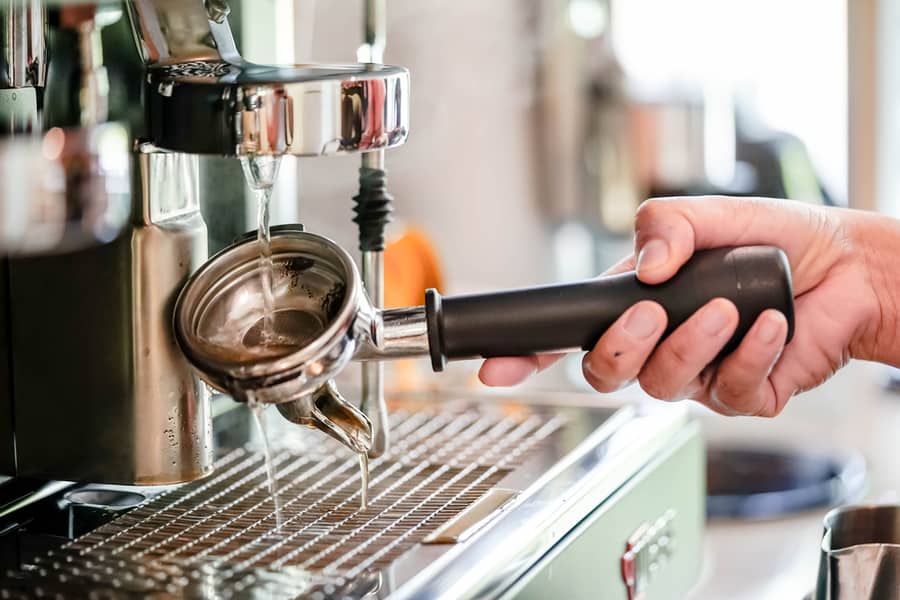
Water leaves mineral deposits inside the machine over time.
All water contains minerals, like calcium and magnesium, which pass through your coffee machine and eventually accumulate as limescale on the machine’s heating element. This is especially likely if you use hard or tap water for your espresso machine.
Descaling a coffee maker is the process of removing that mineral buildup. This buildup can slow the brewing process, making your coffee less tasteful. To descale, you need to use commercial descaling products.
It is best to descale your SowTech espresso machine every three to six months, depending on the frequency of use.
The process of descaling a Sowtech espresso machine is the same as the one we discussed above on cleaning. However, you use commercial descaling products instead of vinegar or citric acid.
You should use distilled water when making your coffee to reduce the amount of mineral buildup in your coffee machine. This will also make cleaning your espresso cleaner easier.
Conclusion
Cleaning your Sowtech espresso machine is necessary if you want it to serve you longer. Cleaning also ensures that your coffee is healthy and tasty.
If you use your machine daily, cleaning the detachable parts daily is best. It would also be best to give the internal components of the coffee maker a deep clean at least once every month and descale it every three to six months.
However, it wouldn’t hurt if you cleaned it more often.
Frequently Asked Questions
What Happens if You Don’t Clean Your Espresso Machine?
Not cleaning your Espresso machine regularly leads to accumulating coffee oils in its interior parts. This accumulation of coffee oils can make your coffee bitter or have a weird smell.
Over time, your machine might become unusable due to clogging and blockage by coffee residue.
What Should I Use To Clean My Coffee Machine?
White vinegar or diluted citric acid/ lime juice effectively cleans a coffee machine.
Does Descaling a Coffee Machine Mean the Same As Cleaning It?
Descaling and Cleaning a coffee machine are concepts that most people tend to confuse. Descaling means the process of removing accumulated mineral deposits from the parts of a coffee machine.
On the other hand, cleaning a coffee machine involves cleaning the accumulated coffee oils and coffee residues.
What Happens When You Don’t Descale Your SowTech Espresso Maker?
Over time, water leaves mineral deposits on the inner parts of an espresso maker. These mineral deposits accumulate and interfere with the heating elements of your espresso maker.
This affects the brewing process meaning that your coffee will not be hot enough and will have less flavor. The buildup of mineral deposits can also clog water flow, damaging the machine if not removed.

